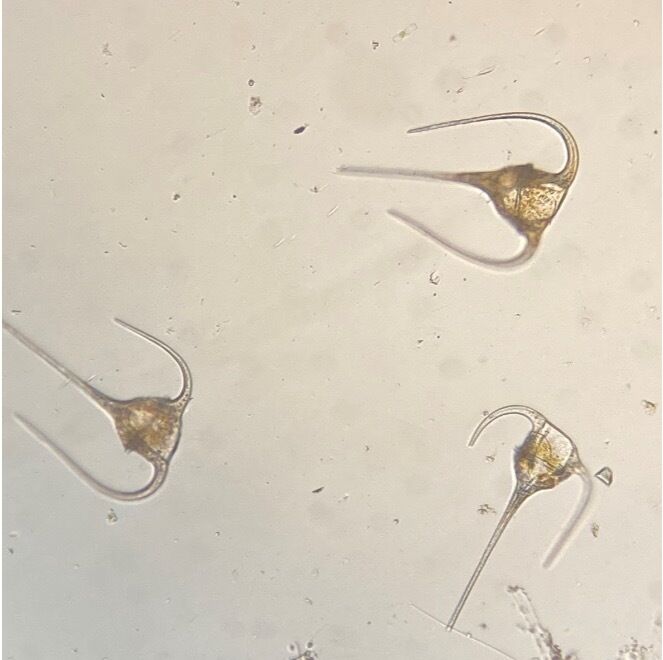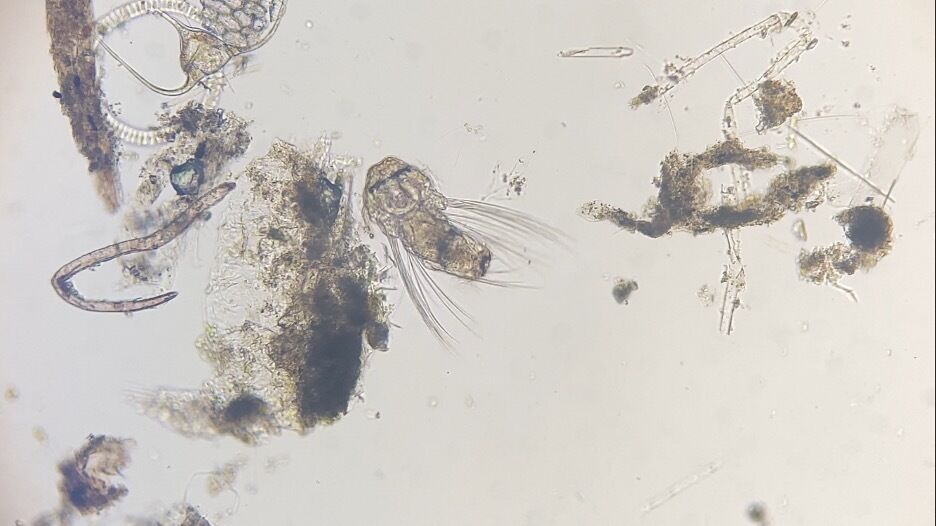Current Sea: Spring Plankton Bloom Sets Stage for a Productive Year in Nantucket’s Marine Habitats
Jack Dubinsky •

Spring has sprung in Nantucket’s marine ecosystems. While our harbors are not adjourned with yellow daffodils, the billions of phytoplankton are beautiful in their own right.
Phytoplankton (also colloquially called algae) are mostly microscopic, single-celled organisms that drift around the oceans and use sunlight to create energy using photosynthesis. There are many different types of phytoplankton, all with different shapes and geometries. While phytoplankton are technically not plants, they are ecologically similar. Like terrestrial plants, phytoplankton are responsible for producing around 50% of the world’s oxygen and are the bottom of the food web.

Every winter, strong winds and cooling of surface waters encourage mixing between the nutrient-rich depths and depleted shallows. This mixing is essential for nutrients to diffuse to surface waters, where phytoplankton will have access to them in the spring. In temperate oceans, the spring plankton bloom is a natural process that happens when just enough daylight is available for phytoplankton to take full advantage of the now nutrient-rich surface waters. Most phytoplankton reproduce using fission, dividing themselves into two identical individuals, who are then capable of division when they produce enough energy. When oceanic conditions are favorable, the small-but-mighty phytoplankton can reproduce quite rapidly, changing the color of large areas of the oceans. Some phytoplankton blooms are even visible from space!

This large increase of phytoplankton biomass is the ecological jump-start that feeds the marine food web. Nearly all of Nantucket’s marine species eat phytoplankton directly, or consume organisms that graze on phytoplankton or consume the grazers, and so on. Many species of fishes, crabs, barnacles, bristle worms, and jellyfish precisely time theird spawning such that their offspring are born in the thick of the spring plankton bloom and have a better chance of survival. Almost all energy found even in the largest marine predators can be traced back to sugars created by tiny phytoplankton.
While we welcome the annual spring plankton bloom, we also worry about harmful algal blooms (HABs), which can damage the environment and impact our lives. Some algal blooms become harmful when the phytoplankton reproduce too quickly and become particularly dense in the water. The dense cells may block light from getting to eelgrass or compete with eelgrass for carbon dioxide in the water. If the phytoplankton die abruptly, decomposers in the water can quickly deplete oxygen and cause a “dead zone” where the lack of oxygen can kill marine fishes and invertebrates.
Some phytoplankton species are toxic to animals, including humans. Amnesic Shellfish Poisoning, Diarrhetic Shellfish Poisoning, and paralytic shellfish poisoning are all caused by eating shellfish contaminated by toxic algae. Fortunately, very few species of phytoplankton produce harmful biotoxins. These species are ever-present in low, non-toxic concentrations, but cause issues when they bloom. Clams, mussels, oysters, and scallops can accumulate and concentrate the biotoxins in their flesh as they consume copious amounts of plankton during toxic blooms and can become unsafe to eat. Fortunately, government agencies test seawater and shellfish flesh regularly to make sure biotoxins do not wind up on the dinner plate. Harmful algal blooms are often caused or exacerbated by fertilizer runoff and can be addressed by reducing the amount of nutrients we use to fertilize our lawns and gardens.

How climate change will affect phytoplankton blooms is still being studied by biological oceanographers and ecophysiologists. Some scientists warn that warmer surface waters will slow down ocean mixing and reduce nutrient availability for the natural spring plankton blooms, while accelerating human-caused HABs. Some scientists are observing spring phytoplankton blooms arriving earlier in the year, which could be problematic if plankton-dependent organisms are not able to shift their spawning routines. Some phytoplankton groups, such as coccolithophores, create shells that are vulnerable to dissolution as the oceans become more acidic.
To learn more about the marine plankton community, join the Maria Mitchell Association for Microscope Mayhem, a workshop-style program where we discuss plankton biodiversity and practice using microscopes while observing 20+ species of live plankton collected from Nantucket. Register here!